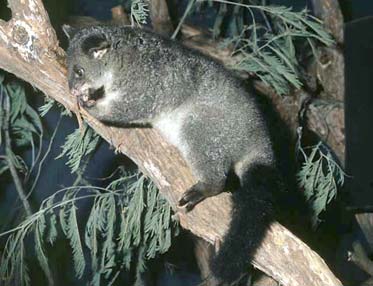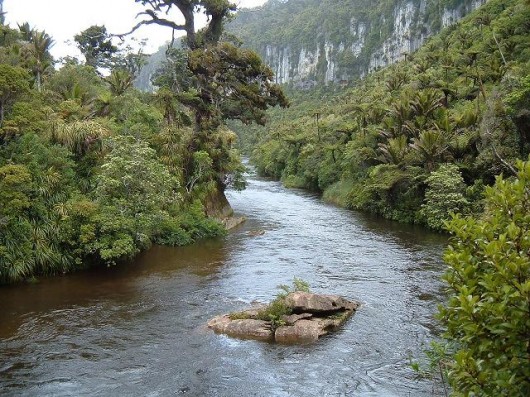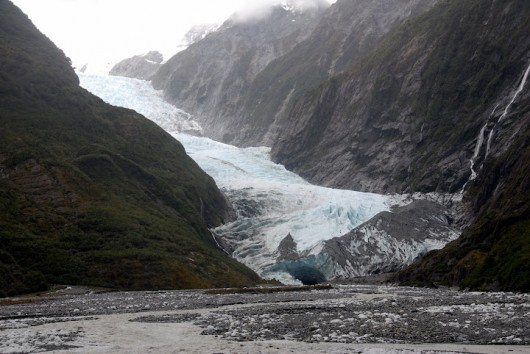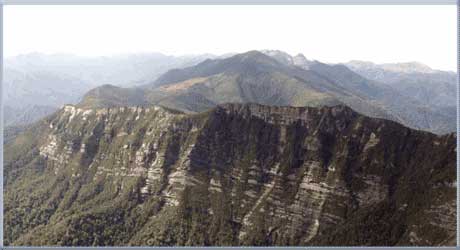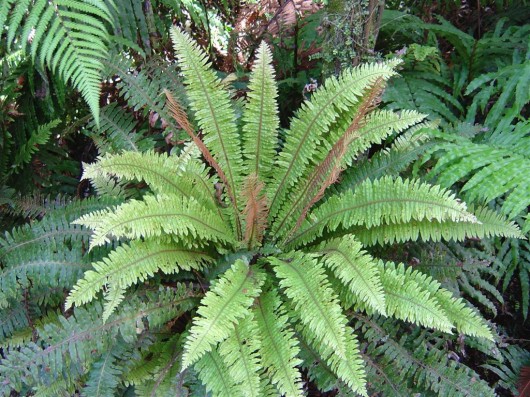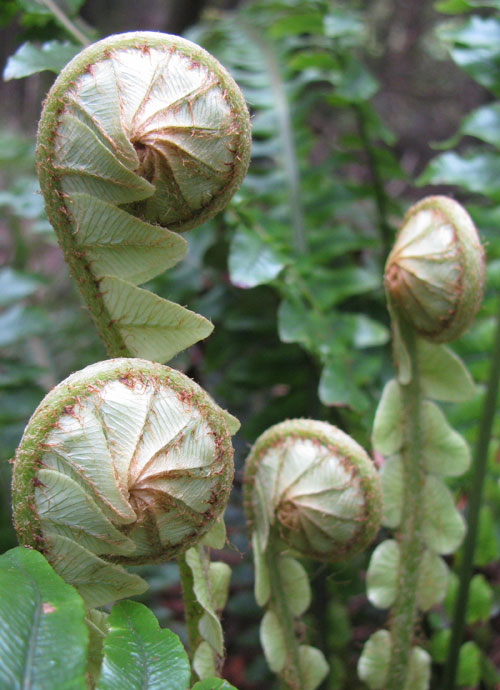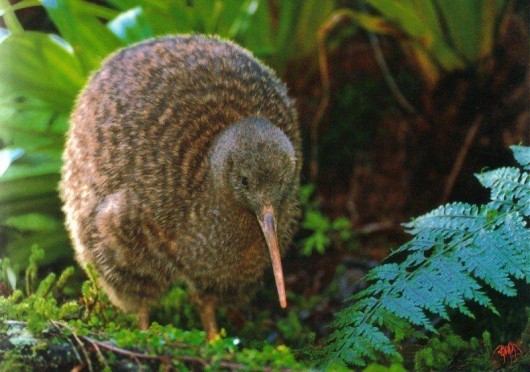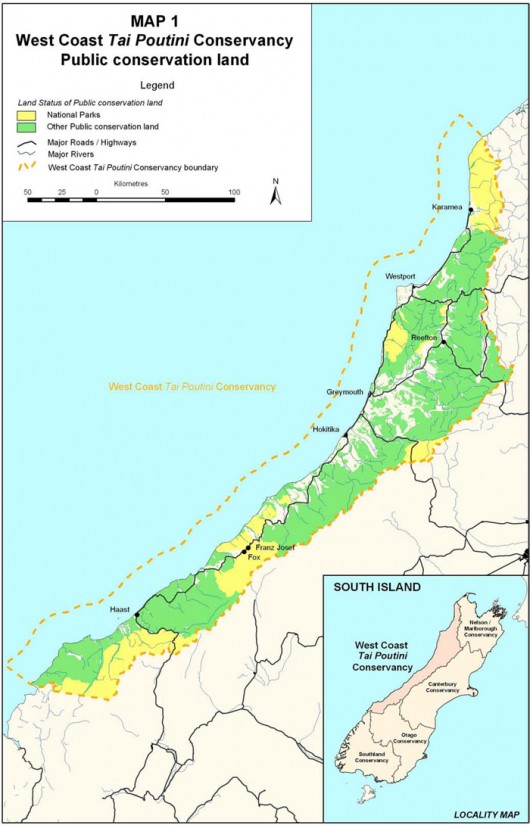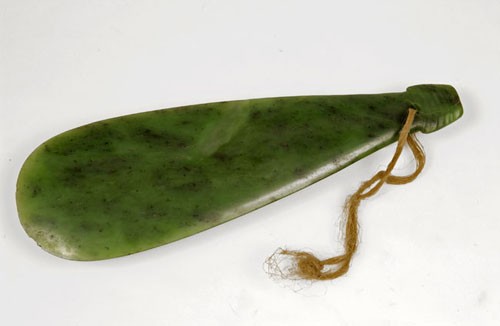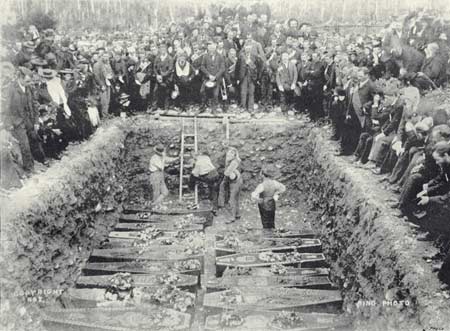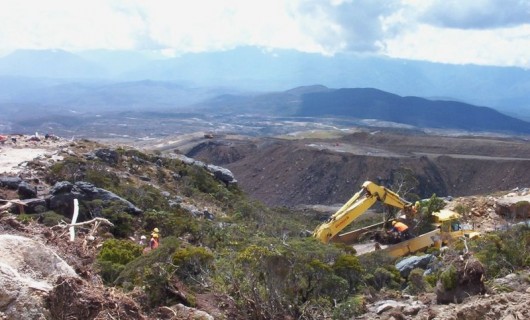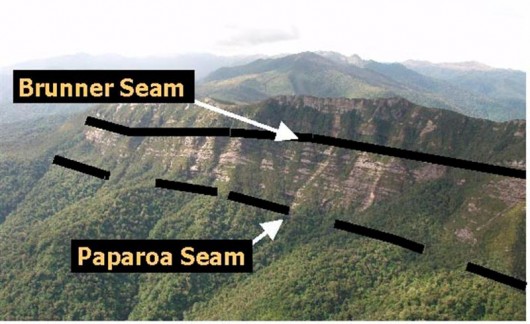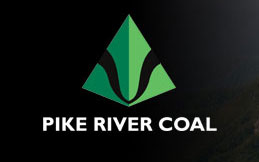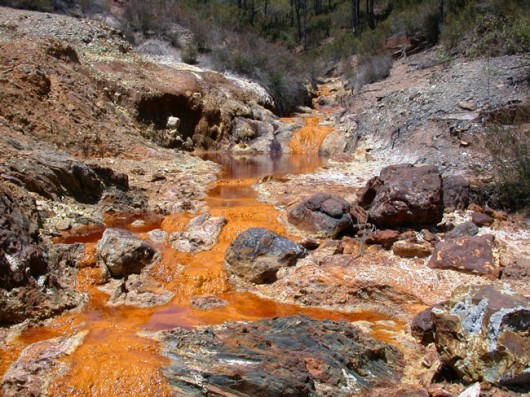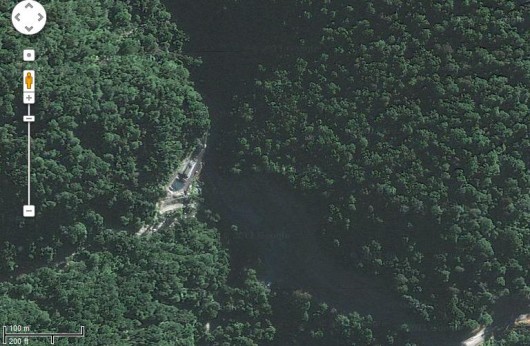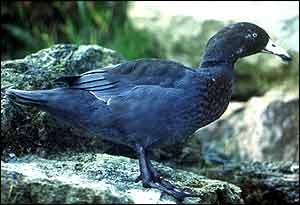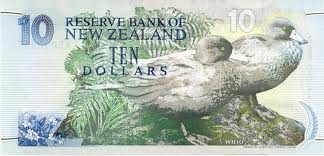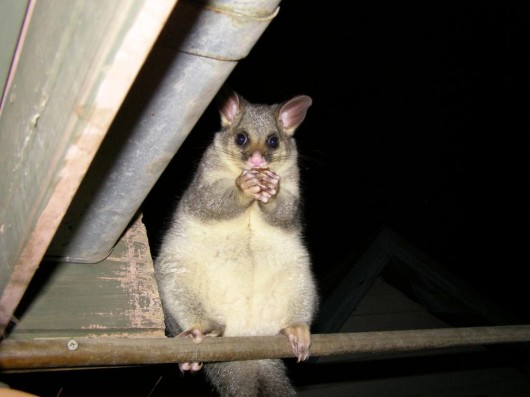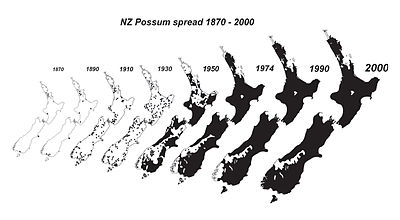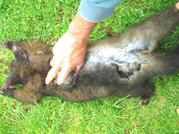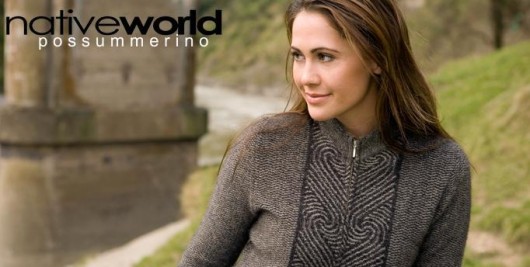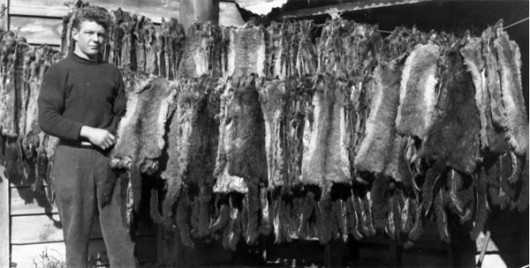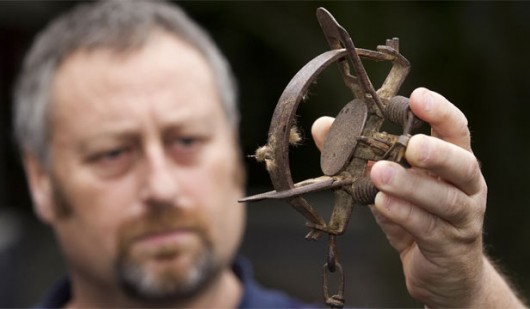Brushtail Possum a NZ backyard Fur Trade
Saturday, May 4th, 2013.
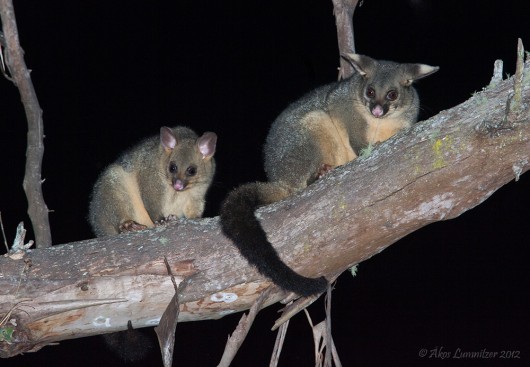 Australia’s native Brushtailed Possum (Trichosurus vulpecula)
Click image to enlarge
Australia’s native Brushtailed Possum (Trichosurus vulpecula)
Click image to enlarge[Image courtesy of Ákos Lumnitzer, ^http://amatteroflight.com/]
.
Australian Possums were introduced by New Zealanders to New Zealand in 1837
.
Brushtail Possums are native to Australia but a destructive introduced pest in New Zealand.
Yet is ‘Possum Merino‘ New Zealand’s ethical solution to its pest control or really just perpetuating a backward 1837 Fur Trade?
After all, it was New Zealander colonists in 1837 who sailed to Tasmania and to the east coast of Australia to poach Australian Brushtailed Possums and export and introduce them into defenceless New Zealand so as to establish a selfish fur trade. Who else is to blame?
So thanks to colonists, Brushtail Possums have unquestioningly since become a destructive colonising pest to New Zealand, just like so many others –
- Stoats
- Domestic cats
- Chamois
- Deer
- Ferrets
- Goats
- European hedgehogs
- Horses
- House mice
- Rabbits
- Rats
- Himalayan tahrs
- Wallabies (also poached from Australia by colonial New Zealanders)
- Weasels
- and arguably all non-Maori humans.
.
Introduced New Zealanders and their descendants professing natural New Zealand justice need to frankly pull their imposive self-righteous heads in.
.
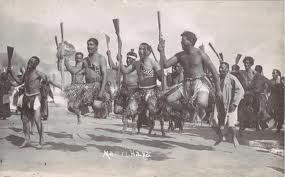 A Maori traditional Haka
A Maori traditional Haka
.
Probably the most relevant and credible authority on this centuries old problem of human introduced possums into New Zealand should be New Zealand’s own Department of Conservation (DOC). Yet DOC has no watchdog to vet its possum control policy, to evaluate the ethics of its indiscriminate aerial 1080 poison programmes, its budget decision making, its pest control methods.
New Zealand Department of Conservation is its own master, answerable to no-one. It dictates possum control and culling only on the basis of it deeming it administratively cost effective and efficient. Perhaps this is a leftover culture of Rogernomics applied to lean management of New Zealand’s ecology. On the New Zealand Department of Conservation website, the possum problem in New Zealand is clearly explained. An issue this author accepts as a serious ecological problem facing New Zealand.
Under the heading 3.3 Possum Damage to Native (NZ) Forests, the possum problem in NZ is explained as follows:
“Over the past 50 years, possums have emerged as one of the major threats to the health and wellbeing of forests throughout New Zealand. Many of these impacts are subtle and indirectly affect native birds and insects. Possums cause damage to native forests from the ground level to the canopy where, by concentrating on individual plants of their preferred species, they can kill trees by defoliation over several years. Possums preferentially feed on some of the tall canopy species – such as tawa, northern rata, kohekohe, southern rata, kamahi, pohutukawa and 20 Hall’s totara – while ignoring others. They also prefer some of the smaller trees, such as tree fuchsia and wineberry, along with mistletoe, forest herbs, some ferns, and a number of endangered shrubs.
It is difficult to imagine that possums, which are about the size of a large cat, can kill individual trees that have dominated forest landscapes for centuries before possums were released here. But when the number of possums is combined with the total amount each one eats, their impact on their preferred species is easier to appreciate. The amount of food consumed by an adult possum each night is about 160 gm of digestible dry matter. There are probably tens of millions of possums living in native forests. In total, possums are consuming thousands of tonnes of vegetation each night.
Possum populations have now modified many New Zealand forests. The rate and extent of these changes vary widely between different types of forests. Beech forests are the least affected, but in the vulnerable southern rata-kamahi forests of Westland many valleys have lost between 20% to 50% or more, of their canopy trees. In severe situations, possums have caused the complete collapse of the canopy within 15–20 years of their arrival. Tall forest is then replaced by shrublands.
While the impact of possums is most visible and dramatic when it involves canopy trees, their most pervasive impacts are often less visible. Possums have recently been described as “reluctant folivores”. This means that possums prefer to eat other forest foods than the leaves of trees. Flowers, fruit, leaf buds, fungi and insects are all highly favoured. The consumption of these foods has the largest impact on the healthy functioning of forests and the animals that rely on them. The consequences of possums concentrating on these foods are:
.
Loss of Flowers:
.
- Preventing the formation of seeds
- Removing nectar sources for birds and bats
- Reducing the food supply for many invertebrates
- Nectar loss reducing food supplies for chicks, e.g. kaka, tui.
.
Loss of Fruits:
.
- Reducing food supplies for birds and invertebrates
- Affecting bird breeding condition and nesting success, e.g. kakapo, kereru
- Reducing or eliminating seed dispersal
- Reducing the regenerative capacity of native plants.
.
Loss of New Shoots:
.
- Reducing the ability of plants to overcome leaf loss from weather and seasonal patterns
- Reducing numbers of new leaves, jeopardising plant health.>>
.
New Zealand Department of Conservation also states that “the damage to native forests can be seen all too clearly in many areas. Possums ignore old leaves and select the best new growth. In some areas they have eaten whole canopies of indigenous Rata, Totara, Titoki, Kowhai and Kohekohe.
Possums also compete with New Zealand native birds for habitat and for food such as insects and berries. They also disturb nesting birds, eat their eggs and chicks and may impact on native land snails.
New Zealand Department of Conservation cites examples of natural vegetation damaged by possums at Pirongia Forest Park, and the upper canopy of NZ native forest trees on the slopes of Mt Karioi, south of Raglan.”
So, assuming New Zealand Department of Conservation’s account is correct, the introduced Brushtail possum is a serious pest to New Zealand (NZ) native ecology.
But what to do about it?
.
What should Australia responsibly do – repatriate back its possums?
.
It’s long overdue for the New Zealand Government to get serious about its self-caused possum problem and look to resolve it once and for all for the benefit of the New Zealand ecology and the possums themselves. It needs to look at the root causes.
The possum was introduced to New Zealand by New Zealand profiteering colonists.
 Many New Zealanders conveniently forget:
It is not the possum’s fault it is in New Zealand.
Many New Zealanders conveniently forget:
It is not the possum’s fault it is in New Zealand.
.
However, pouring $80 million a year of New Zealand taxpayers money into cruel indiscrimate aerial baiting is not working. If it was the possum problem would be reducing and there would not be a burgeoning possum fur trade.
Instead of perpetuating a 19th Century immoral fur trade, in order to control possums and other introduced pests in New Zealand, one option is to catch and relocate them back to their native home country habitat. This may seem highly expensive and labour intensive and far fetched, but what other option is both humane and effective?
It’s not the possums’ fault. New Zealand colonists introduced them from Australia to New Zealand. The problem is an inherited inter-generational problem caused by New Zealand colonists. It shoud be solved by their descendants, not perpetuated as a fur trade.
Acknowledging the possum in NZ is an introduced pest, the question in this case is whether the possums in New Zealand are being killed humanely and whether this is being effectively monitored by a government watchdog worthy of the public trust?
By killing possums, humans have a moral obligation to do it humanely. Possums like all animals are sentient beings and so feel pain, fear and suffering.
.
New Zealand sprays 1080 poison over its native forests
.
New Zealand Department of Conservation’s official choice of death is aerial baiting with the the literally cheap and very nasty poison ‘1080’ (‘ten-eighty’, or Sodium Monofluroacetate).
New Zealand Department of Conservation’s argues it is humane and safe.
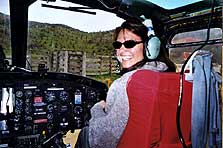 Heading out to drop 1080 poison across NZ forests
(a smiling assassin)
Heading out to drop 1080 poison across NZ forests
(a smiling assassin)
.
But The World League for Protection of Animals argues otherwise and offers the following explanation about ‘1080’ poison.
“1080 (sodium monofluroacetate) is a cruel and indiscriminate poison used to ‘remove’ unwanted populations of animals.
Banned in most countries, 1080 is still used liberally throughout Australia to control so-called ‘pest’ species, and reduce ‘browsing damage’ caused by native animals on private land.
1080 poison is a slow killer. When ingested (usually through baited food) the animal suffers a prolonged and horrific death. Herbivores take the longest to die – up to 44 hours, while carnivores can take up to 21 hours before finally succumbing to final effects of the poison. The speed of death is dependent on the rate of the animals metabolism.
.
1080 Poison Causes a Slow & Horrific Death
.
Witnesses to the deaths of herbivorous animals, such as macropods, have reported:
“Affected wallabies were sometimes observed sitting hunched up, with heads held shakily just above the ground. Generally they appeared non-alert and ‘sick’, with shivering or shaking forelimbs and unsteady balance. Most individuals then experience convulsions, falling to the ground and lying on their backs and sides, kicking and making running motions with their hind legs before dying. Many individuals also ejaculated shortly before death, and, with others, exuded a white froth from their nostrils and mouth.”
Carnivorous animals such as dingoes, dogs, foxes, and cats become very agitated, as they tremble, convulse and vomit.
.
Animal symptoms of eating 1080 poison:
.
“…restlessness; increased hyperexcitability; incontinence or diarrhea; excessive salivation; abrupt bouts of vocalization; and finally sudden bursts of violent activity.
All affected animals then fall to the ground in teranic seizure, with hind limbs or all four limbs and sometimes the tail extended rigidly from their arched bodies. At other times the front feet are clasped together, clenched or used to scratch frantically at the cage walls.
This tonic phase is then followed by a clonic phase in which the animals lie and kick or ‘paddle’ with the front legs and sometimes squeal, crawl around and bite at objects. During this phase the tongue and penis may be extruded, their eyes rolled back so that only the whites show and the teeth ground together. Breathing is rapid but laboured, with some animals partly choking on their saliva. Finally such individuals begin to relax, breathing more slowly and shallowly and lying quietly with the hind legs still extended but apparently semiparalysed”.
From the above descriptions, it is without question that 1080 poison inflicts great pain and suffering on affected animals. Aside from the physical pain endured over the many hours before death, the terror, fear and anxiety felt by these animals is unimaginable.”>>
.
Read More: The World League for Protection of Animals,^http://www.wlpa.org/1080_poison.htm
.
The main reason why the New Zealand Department of Conservation uses 1080 is simply because it is cheap. Dropping it it indiscriminately by air is efficient and convenient.
Whereas setting caged traps for possums is expensive. Using poisons that act faster that 1080, such as cyanide is also more expensive.
So the New Zealand Department of Conservation’s key justification for its use of 1080 is one of cost.
It also justifies using 1080 because other countries use it for pest control, like Australian & the USA , so implying that 1080 must therefore be ethically acceptable. But New Zealanders should make up their own mind and should recall that both the USA and Australia used Agent Orange in The Vietnam War.
The Department of Conservation also justifies 1080 use because NZ has no natural mammals so the risk to non-target species are nil. But this claim is FACTUALLY INCORRECT!
On 30 July 2008, The Dominion Post reported that after a Department of Conservation aerial drop of 1080, seven kea had died at Fox Glacier from eating the 1080 poison, wiping out almost half a group of the endangered and protected parrot being monitored by the Conservation Department. DOC came up with excuses, but with such an endangered bird with so few kea left on the planet, DOC cannot afford to gamble with the kea’s extinction.
Anti-1080 campaigner Mike Bennett said the kea deaths were the tip of the iceberg. “These are only the monitored ones. If that percentage is extrapolated for the entire population, that doesn’t leave many for the next drop” and has called for a ban on all aerial 1080 drops in alpine areas.
.
New Zealand is not reducing possum numbers, just perpetuating its 1837 Fur Trade
.
New Zealand’s own backyard fur trade has seen a recent resergence since the 1830s when New Zealand hunters first introduced the possum to the wilds of New Zealand. the traditional method of possum slaugher is by trapping. For nearly two centuries the cruel ‘gin trap’ with serrated jaws was used. Although the trapping laws have recently banned gin traps, leg-hold traps remain the method of choice for trappers.
According to the NZ Lifestyle Block website:
“Leg-hold traps such as the ‘Lanes Ace’ or ‘Gin Trap’ have been widely used for possum and rabbit control for many years. The gin trap is more than 10.5 cm across its open jaws, which are serrated, and it is powered by a flat metal spring, so it’s a “size 1½ long spring” trap.
Traps of size 1½ or larger are more likely than the smaller traps to snap shut across the belly or chest of an animal. Although larger traps have been banned, traps of size 1½ can still be used if they are powered by double-coil springs. From January 2011 they will have to be padded, and you can’t modify them yourself to make them padded…
.
Why are these traps cruel?
.
When the gin trap snaps shut on its victim, the teeth bite into the skin and can cause a lot of trauma and no doubt agonizing pain.
All leg-hold traps are indiscriminate about what they catch. If they are set in possum tracks or runs it’s more likely than not that any catch will be a possum, but it might also be a cat… rat, bird or small dog. Large dogs can sometimes pull out of them but they may be injured in the process.
.
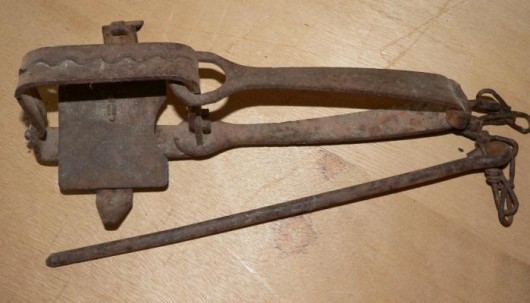 Possum Trappers preferred weapon of choice: the ‘Lanes Ace’ or ‘Gin Trap’
Widely used for possum trappers in New Zealand for many years.
Possum Trappers preferred weapon of choice: the ‘Lanes Ace’ or ‘Gin Trap’
Widely used for possum trappers in New Zealand for many years.
.
Icing sugar or flour around traps is sometimes used to attract possums, but if used beneath a trap the animal is likely to be trapped by its snout or head.
.
What are the alternative leg-hold traps?
.
In New Zealand it is still legal to use size 1 leg-hold traps such as the Victor within the restrictions on location and setting described above. It is smaller than the gin trap and doesn’t have serrated jaws.
The ‘Victor No 1‘ can be bought with cushioned inserts that make it more humane. It tends to cause less frequent and less severe injuries than the gin trap and larger leg-hold traps, but it can still cause severe bruising, and trapped animals will sometimes cause themselves severe injuries in their struggle to get free.
Trappers favour the Victor No 1 because it is compact, light and relatively efficient. The changes in the legislation mean that it is likely to become even more popular.
There’s good advice for landowners on the most humane way to use leg-hold traps and their alternatives on the National Possum Control Agencies website (www.npca.org.nz), and not just for possums but for ferrets too.”>>
.
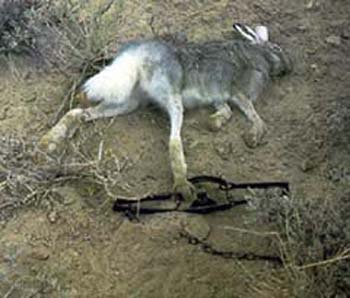 Rabbit caught and dead in Lanes Ace Trap.
The steel jaws of the trap break the rabbit’s leg and it dies of pain and suffering over days.
These are used in New Zealand in the possum fur trade
[Image Source: ^http://www.animalwritings.com/archive/2004_08_01_blog_archive.asp]
Rabbit caught and dead in Lanes Ace Trap.
The steel jaws of the trap break the rabbit’s leg and it dies of pain and suffering over days.
These are used in New Zealand in the possum fur trade
[Image Source: ^http://www.animalwritings.com/archive/2004_08_01_blog_archive.asp]
.
Typical traps used in New Zealand for possums are the flat jaw/leg hold’ type such as the ‘Bushmaster‘. While recognised as more humane that the serrated jaw ‘gin trap’, it can still cause suffering to a trapped animal, and of course is indiscriminate.
The Hamilton City Council on the North Island prohibits the use of leg-hold traps such as gin traps in residential areas and within 150 metres of dwellings or places where there are likely to be pets. It instead recommends Cage Traps and Timms Traps for possums and other feral animals.
.
New Zealand’s 1837 Possum Fur Trade now globally profitable!
.
The justification spin:
.
<<…Possums were introduced into New Zealand by the caring, sharing Aussie cousins in the 1870s, to get the fur trade going. [Ed: How do we know it was not New Zealand colonists returning to New Zealand that introduced the possum?] Unfortunately what the possums did is have a fabulous time in the New Zealand climate, and aided by the decline in the fur industry, increased their numbers to over 70 million today.
Possums are a pest in New Zealand. Not only do they manage to consume approximately 21,000 tonnes of vegetation every night, but they are also killing native birds, and generally upsetting the ecological balance. Many native trees, plants and birds, including the Kiwi, are under threat of extinction because the possum is destroying their habitat. A possum will visit the same tree night after night and eat away until the point where the tree cannot recover. It has also now been confirmed that possums will eat both the eggs and chicks of the native Kiwi and Kokako. Where Australian plants have their own defences against the possum, NZ plants do not. The possum has no predator in NZ. Regular culling has been carried out under government supervision since the 1940s and it is estimated to cost around £20 million each year.
Very interestingly, the World Wide Fund for Nature does acknowledge that possums need to be controlled.
Although the culling began in the 1940s, it has only been in the last 30 years that good use was made of the resulting resource.
Kiwis (the human ones!), known for their ability to fix anything with a piece of no. 8 fencing wire, are a bit of an ingenious lot. They’ve managed to turn the pest into an export commodity. Possum meat goes to Asia (have you eaten ‘Kiwi Bear’?!), and the pelt is used for any number of commodities as it has properties that lend itself to both warmth and protection. New Zealand is the only place in the world where possum fur can be harvested.>>
[Source: ^http://www.kiwikate.co.uk/].
Ed: The British colonial New Zealander’s cultural inferiority complex with nearby Australia is manifested in a hatred for Australian Possums.
Proud in denial, the fact is that colonial New Zealanders in 1837 chose to sail to Australia to capture the species and voluntarily introduce the Brushtailed Possum to New Zealand.
In 1837, Australian possums didn’t want to go to New Zealand. Colonial Australians at the time probably took no interest in a few New Zealanders taking wildlife for their own gain. Maoris atthe time probably were unaware, had no say then anyway, but would have challenged the introduction had they been duly informed.
Kiwi Kate’s reference to “caring, sharing Aussie cousins” sadly reflects bigotry out of her misinformed upbringing.
.
Use of Feratox (cyanide) Poison?
.
According to the Lifestyle Block website NZ veterinarian Dr Marjorie Orr, BVM&S, PhD, BA and lifestyle farmer on , the most humane method of possum control is to use Feratox capsules, which is an encapsulated cyanide.
The preferred baiting method is to use these in specially designed “bait stations or sachets stapled to trees, baited with peanut butter (possums like it and dogs and birds usually don’t). The pest control companies that put out the poison will usually on request remove the sachets after a few days, and this helps reduce the risk of accidental poisoning of other animals. The poison in the capsules, cyanide, is quickly destroyed on exposure to air. Death is quick and relatively stress-free and there is no risk of secondary poisoning of dogs that scavenge poisoned carcases.”
The test of humane killing must be conditional on the absence of pain and stress caused to the animal and that the killing be very quick.
But the killing of a native animal is wrong, despite it being introduced by humans. It has become a convenient excuse for New Zealanders to kill possums. Possum control by either DOC or the fur trade is not effective and in both cases the chosen methods are inhumane.
.
New Zealand’s possum problem has been allowed to escalate into an immoral industry for profiteers.
The New Zealand Government is responsible for failing to deal with the problem effectively and humanely.
It has perpetuated an immoral fur trade that begun in the 19th Century, and at the same time allowed much irreversible harm to be caused to New Zealand’s fragile ecology.
.
Possum Comments:
.
‘The legacy of human ignorance and delinquency is enormous’
(Vivienne 20091205) :
.
<<Research has begun recently into biocontrol of brushtail possums as the only long-term, cost-effective solution to the possum problem in New Zealand, where possums cause significant damage to native forests, threaten populations of native plants and animals, and infect cattle and deer with bovine tuberculosis.
see the abstract for the CSIRO report
Immunocontraception is a humane means of controlling possums with wide public acceptance.
Although several studies have investigated or modelled its demographic consequences, there have been few studies of the possible effects of the presence of sterile females on local males.
Implications for biological control
Cynanide kills more quickly than 1080, but no less violently. Researchers have called this death humane!
Food is provided in a feeder for a few of days to lull the animals into a false sense of security. Then their trust is betrayed with the food being replaced with encapsulated cyanide pellets. The animals die within metres of the feeding station.
Possums are endearing little animals and what they suffer is horrific! The legacy of human ignorance and delinquency is enormous! Our colonial attitudes continue to haunt us today, with species continually threatened and made extinct by human expansion and self-interests.>>
.
‘Fertility controls the only longterm option for NZ possums’
(Pat, 20091207).
<<Fertility controls the only longterm option for control NZ possums, anything else is only a bandaid. We have the technology to do this, it only needs some more research and it could proceed. Its crazy to allow unwanted animals to breed out of control, then cruelly kill them, 1080 or not.
40 years ago we put a man on the moon….and then bought him safely back….and yet we cant humanely solve the NZ possum problem? I dont believe it! The NZ DOC appears to be as incomptent and as useless as our own Australian wildlife bureacracies.>>
.
‘NZ possums’
(Possum lover, 20091208):.
<<As always- the real pest is the human.
However, I can see from this article that the New Zealand environment would be better off without the Brush Tail Possum. Apart from the cruelty a possum fur industry makes little sense as it would rely on a sustainable population of the animals – and this would mean continued deleterious effects on the environment. Bringing millions of animals back to Australia seems extremely impractical as I think there would be a lack of habitat and how would one round them all up? Human population growth is continually robbing possums of habitat in Australia even though they are very good at sharing with humans.
The poisoning and trapping options are not acceptable at all- and anyway — it seems clear that whatever they are doing in NZ to reduce the population of possums — they are not being effective, anyway !
(As I write this I hear on radio National that a few hundred camels will be shot in central or northern Australia because their numbers have got out of hand and they come close to human settlements looking for water. Who brought the camels to Australia? Who put them to work in opening up the centre of the continent.? Who abandoned them to the wild when they had served their purpose?)
Back to the possums- realistically it seems to me that it’s a choice of either accepting the possums and a changed environment (just as humans changed the ecosystem by extinguishing the moa) or making a concerted effort to humanely totally eradicate the animals from NZ. There is no point in partially reducing the population as more possums will fill the available habitat.
More info on the practicalities of sterilisation would useful. If only there was a measure of the suffering that humans inflict on each other and on other animals. All other suffering on the planet would be dwarfed by this measure.>>
.
‘New Zealand complacent about its wildlife’
(Tigerquoll, 20091208):.
Yes, I agree the real pest is the human. Yes, I agree the New Zealand environment would be better off without the Australian Brushtail Possum.
To round up and try repatriating the many Brushtail possums in New Zealand back to Australia would be extremely impractical. Do we know the numbers and their geographic concentrations? Assuming the possum are on both islands, can one island be targeted first?
Where would they be repatriate to? Possums are territorial mammals. Even in Australia native wildlife experts claim that it is not possible to relocate possums, which poses problems for both possums already in Australia and for the reintroduced possums. The cost exercise would highlight the extent of the problem and the real costs of New Zealand having neglected a serious pest invasion for nearly two centuries. This reinforces the scale and complexity of introduce pest problems when left ignored.
But what is the alternative that is both ethical and effective?
The sterilisation science sounds encouraging, yet even then ‘immunosterilization’ as it is formally labelled has questions about efficacy of fertility control, the means for delivering antigens. Then there are the potential legal and social concerns that relate to the possible future use of antigens.
But I do recommend this is where the $80 million of New Zealand taxpayers money should be diverted instead of indiscriminate 1080 drops by helicopter. Question is why has the New Zealand Government become so complacent about seeking a humane and effective permanent solution?
Australia’s feral camel problem in central Australia is comparable to New Zealand’s possum problem. I understand they will be shot, which suggests a faster clean kill (so long as the shooter is a trained marksman with appropriate knowledge of camel to effect a single round quick kill, rather than some recreational shooter), but what to do with the carcasses? Is shooting humane and ethical? Is shooting the only answer, or is it just the cheapest and nastiest quick fix coming from some staffers desk? Could these camels not be herded and shipped live back to their native country in the Middle East or North Africa or from wherever their ancestors originated?
Question again is, why has the Australian Government also ignored the feral camel problem for so long to allow it to build to becoming so numerous and widespread?
I am not in favour of New Zealand ignoring its possum problem, because such a defeatist stance would only perpetuate further destruction of New Zealand’s forest ecology and to inevitable local extinctions of native flora and fauna. It would also encourage the perpetuation of New Zealand’s immoral fur trade, which is no different to Canadians commercially clubbing fur seals.
Is the New Zealand Government just as complacent with its Biosecurity? Less than a month ago Queensland cane toad was found in an Australian tourist’s hiking boot in Queenstown on the South Island. All it needed was a mate and it would have been off and breeding. “A MAF biosecurity spokeswoman confirmed the toad arrived last Tuesday but was not spotted.”>>
[SOURCE: ‘Cane toad evades Kiwi airport biosecurity’ , by Tamara McLean, AAP, 20091126. Read More: ‘Cane toad catches ride to Queenstown’, by Will Hine, Fairfax NZ, ^http://www.stuff.co.nz/national/3098565/Cane-toad-catches-ride-to-Queenstown].
.
Footnote:
.
It makes it hard for New Zealand’s Department of Conservation to act to properly address New Zealand’s chronic feral possum infestation, when the government sacks 140 of DOC’s staff demanding it cut $8.7 million in operational expenditure…
.
‘DOC cuts 140 jobs’
[Source: ‘DOC cuts 140 jobs’, 20130326, by Michael Daly, Fairfax NZ, ^http://www.stuff.co.nz/national/politics/8471779/DOC-cuts-140-jobs].
<<The Department of Conservation (DOC) has announced plans to cut about 140 largely regional management and administration positions. The job losses are part of a reorganisation under which DOC’s existing 11 regional conservancy boundaries will be replaced with six new regions.
DOC director-general Al Morrison says the new structure would maintain DOC’s own conservation delivery work while setting the department up to work more effectively with external partners.
“DOC must adapt if it is going to meet the conservation challenges that New Zealand faces – even if you doubled DOC’s budget tomorrow we would still be going ahead with this proposal.”
DOC would continue to operate out of the same number of offices as now with more than 1200 operational staff, Morrison said. About 118 management and administrative positions would go as a result of the new flatter organisation. A further 22 operational roles would be cut through efficiencies gained by setting up new support hubs for activities such as asset management, inspections and work planning.
The size of the proposal was aimed at ensuring DOC met its $8.7 million savings targets and continued to meet its current delivery work.
.
[Ed: This should pay for John Key’s $7 million funding to Immigration New Zealand to “increase visitor numbers by smoothing processes at the border” ^http://www.nzherald.co.nz/business/news/article.cfm?c_id=3&objectid=10878911].
.
A conservation partnerships group would be set up focused on working with community groups, iwi, local authorities, private landowners and businesses to attract more resources to conservation, Morrison said. Recreational and natural heritage field work would be the responsibility of a conservation services group.
Consultation with staff about the proposals had started and no final decisions would be made until staff feedback had been considered. Any changes would not take effect for some months.
“I acknowledge this will mean a difficult period for many staff and we will be making every effort to ease the impact of these proposals,” Morrison said.
A freeze on hiring new staff had been in place and about 160 positions were filled with temporary staff. “It is simply too early to say what impact these proposals will have on individuals – we will look at all options such as redeployment and relocation to minimise redundancies.”
.
‘GAPING HOLES’
The Green Party earlier today predicted the proposal was to axe 140 jobs.
“With the department already pared to the bone these latest cuts will mean less protection of our special native plants and wildlife,” Green Party conservation spokesperson Eugenie Sage said. “DOC manages more than a third of the land in New Zealand and the argument that volunteers and a few corporate sponsors will fill in the gaping hole these cuts and continued pressure on department spending create is nonsense.
“National is trying to turn DOC into a corporate entity focused on stakeholders and corporate sponsorship at the expense of its key role to to protect and preserve native plants and animals,” Sage said. “This National Government is toxic to the environment and is polluting, digging up and selling our children’s future.”
Prime Minister John Key this morning said the department was over-staffed with middle management and bureaucracy. “What you have seen is, over the good times under a Labour government a big buildup in kind of the middle management and bureaucracy, and in the leaner, harder times where the Government doesn’t have a lot of money to throw around, we don’t have that much money,” he said.
.
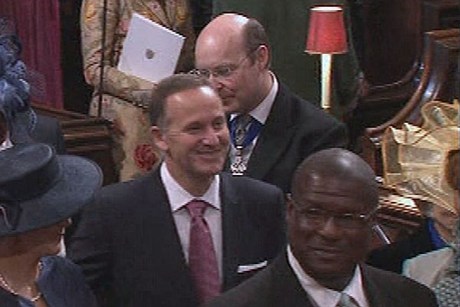 King of Overseas Holidays, John Key,
He flew first class with his wife to attend a foreign royal wedding on 20110429
Here he’s looking resplendent in his bespoke $6,000 suit washed with pounamu.
Total cost of Key Junket which did nothing for New Zealand, NZ$200,000?
King of Overseas Holidays, John Key,
He flew first class with his wife to attend a foreign royal wedding on 20110429
Here he’s looking resplendent in his bespoke $6,000 suit washed with pounamu.
Total cost of Key Junket which did nothing for New Zealand, NZ$200,000?
.
.
“Government agencies now needed to be leaner, and more efficient”, Key said. He compared the restructuring to a similar exercise at Telecom, which was expected to axe hundreds of jobs this year.
“If you go and look at what is happening at Telecom at the moment, on a different scale … but no-one is arguing that the chief executive isn’t doing the right thing trying to make sure that organisation is leaner and more efficient,” he said. The Government had a responsibility to taxpayers, he said.
“The management at DOC have a responsibility to ensure that their resources are directed in the right place and that is what you are going to see today,” Key said>>
.
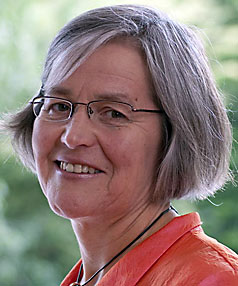 Ms Eugenie Sage
Green Party of Aotearoa representative:
Ms Eugenie Sage
Green Party of Aotearoa representative:

